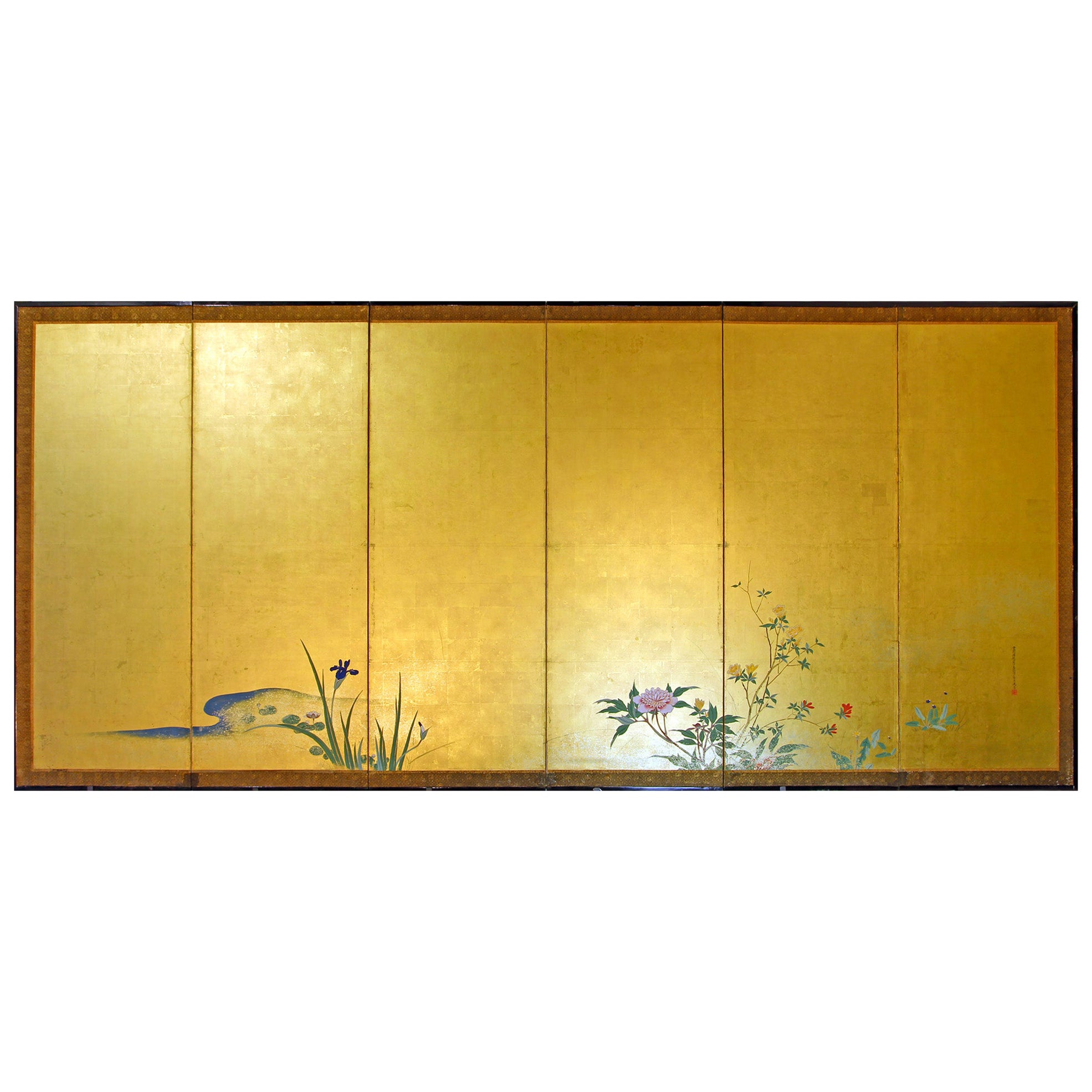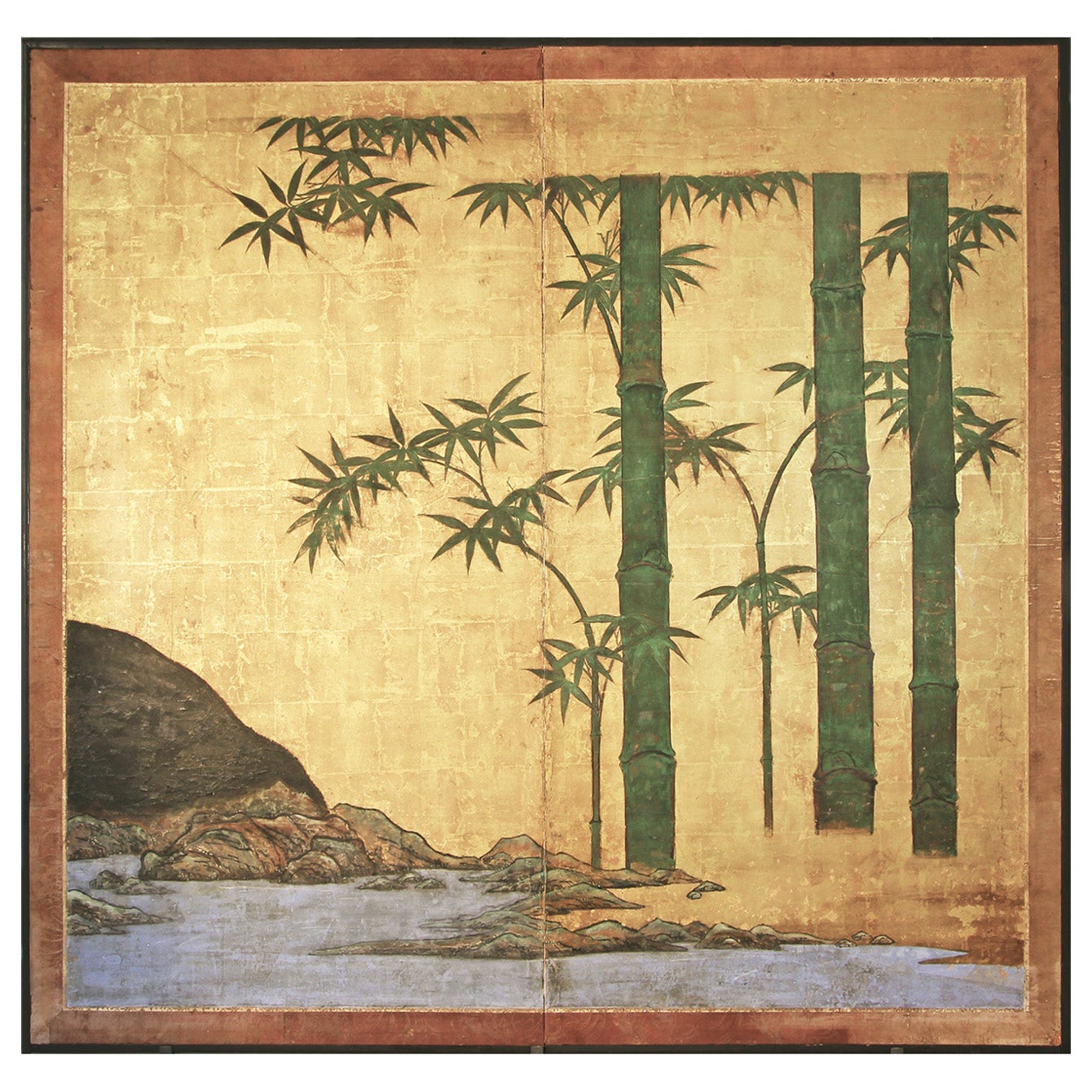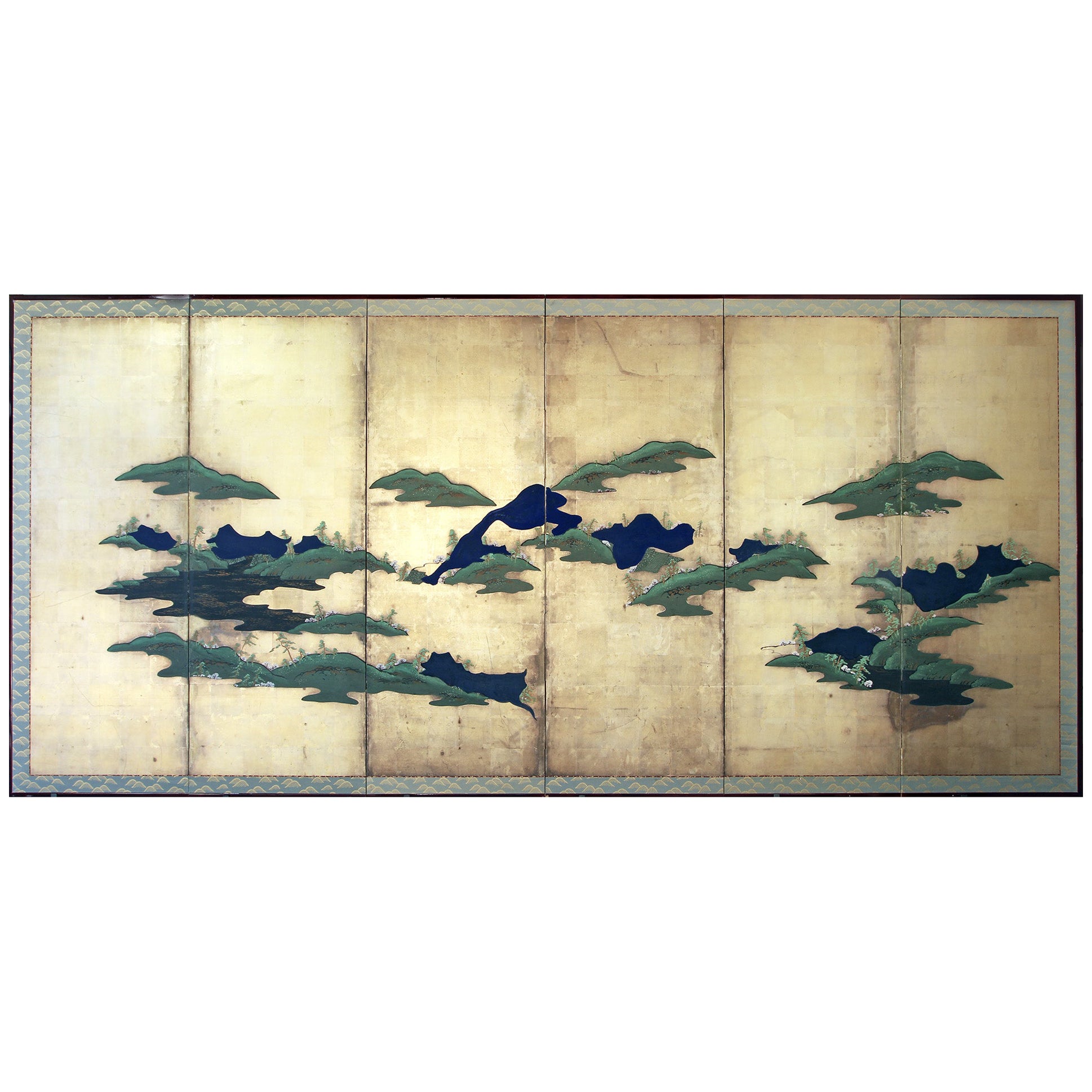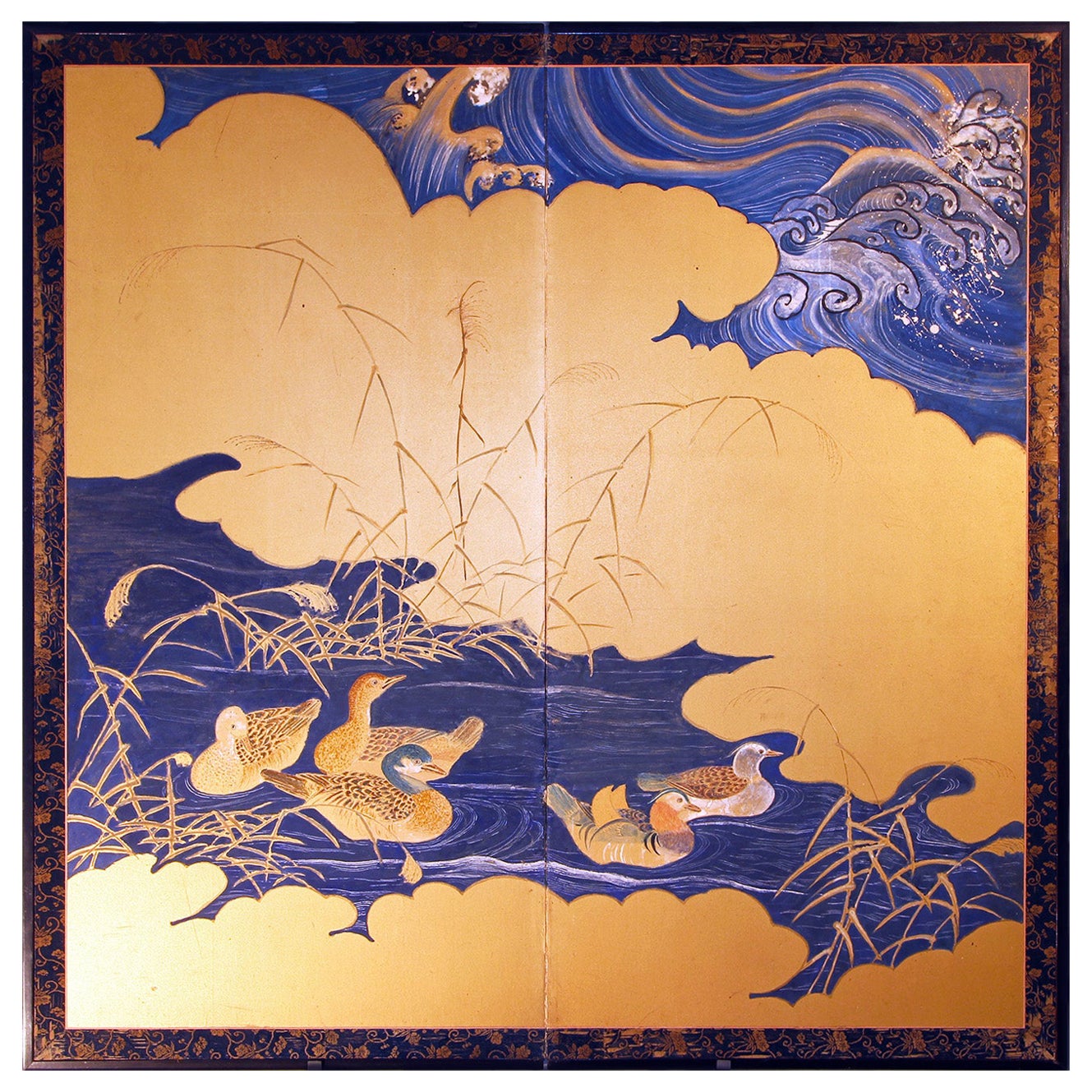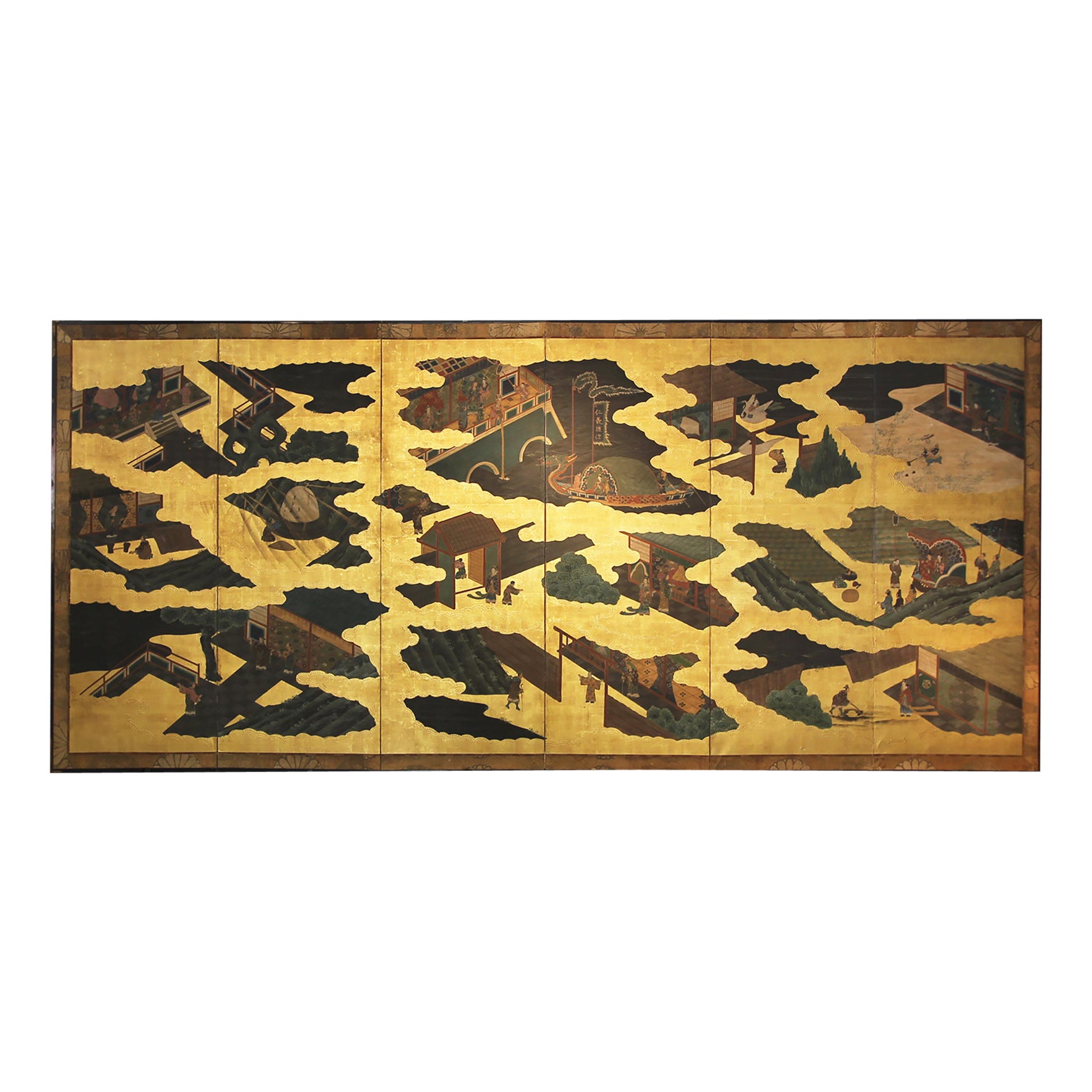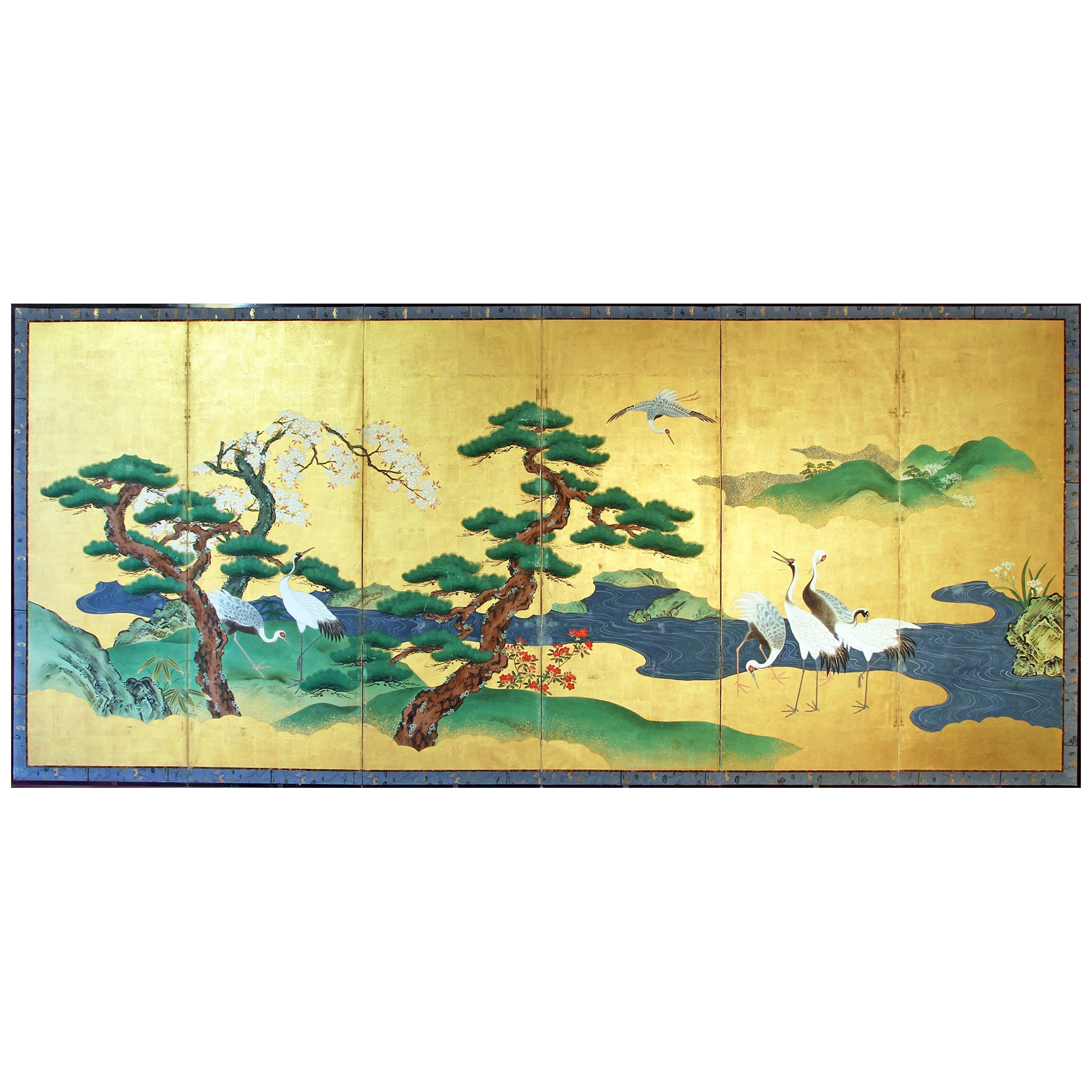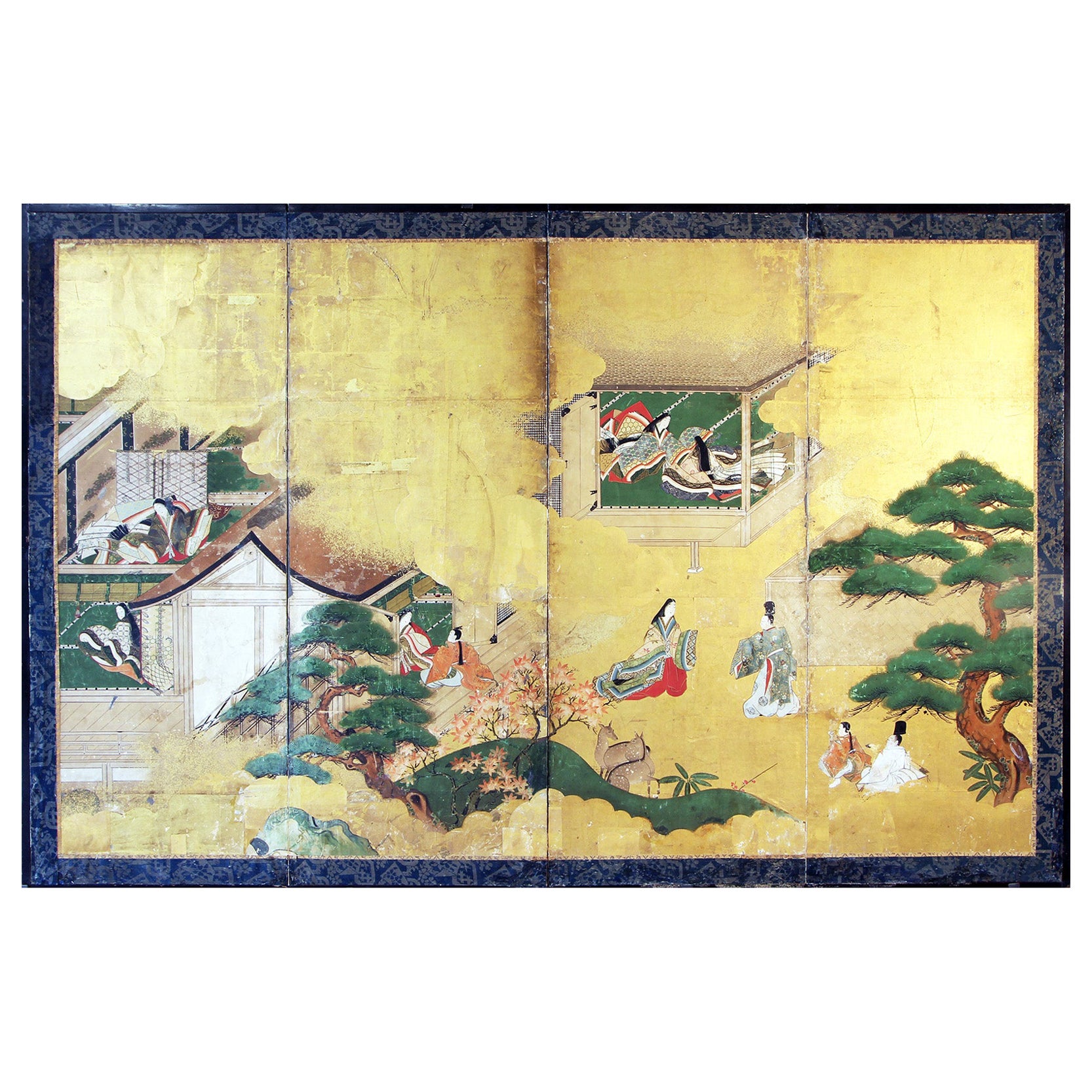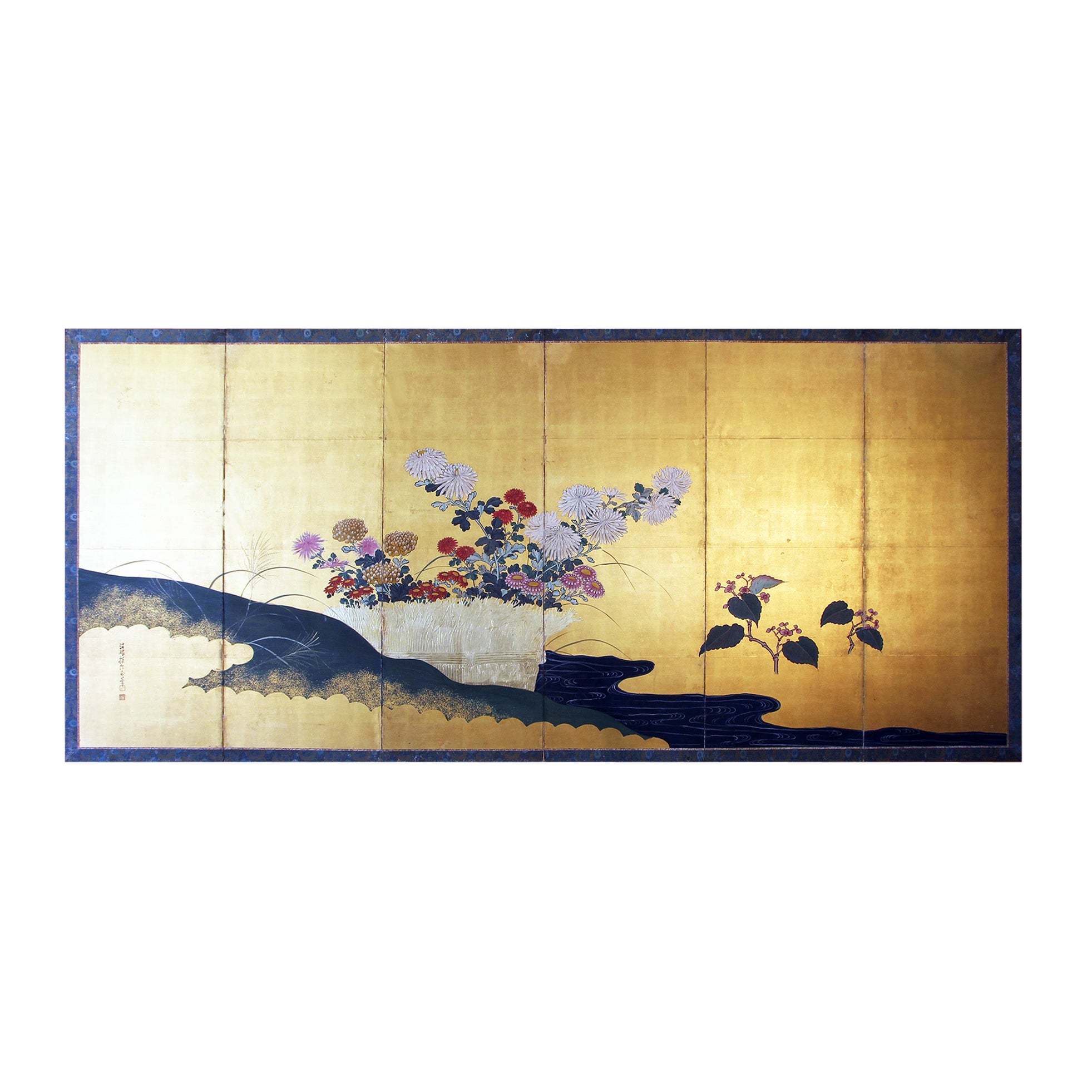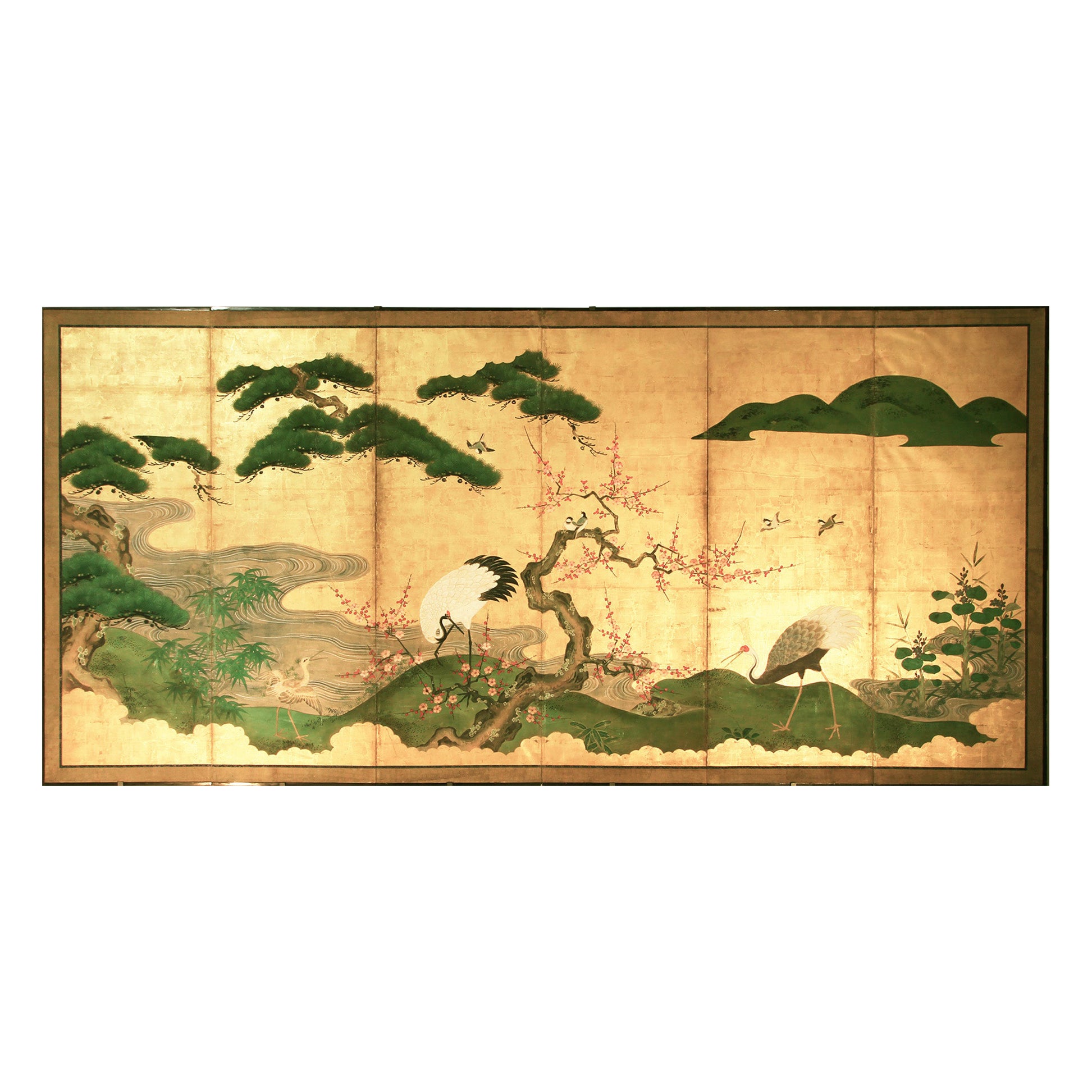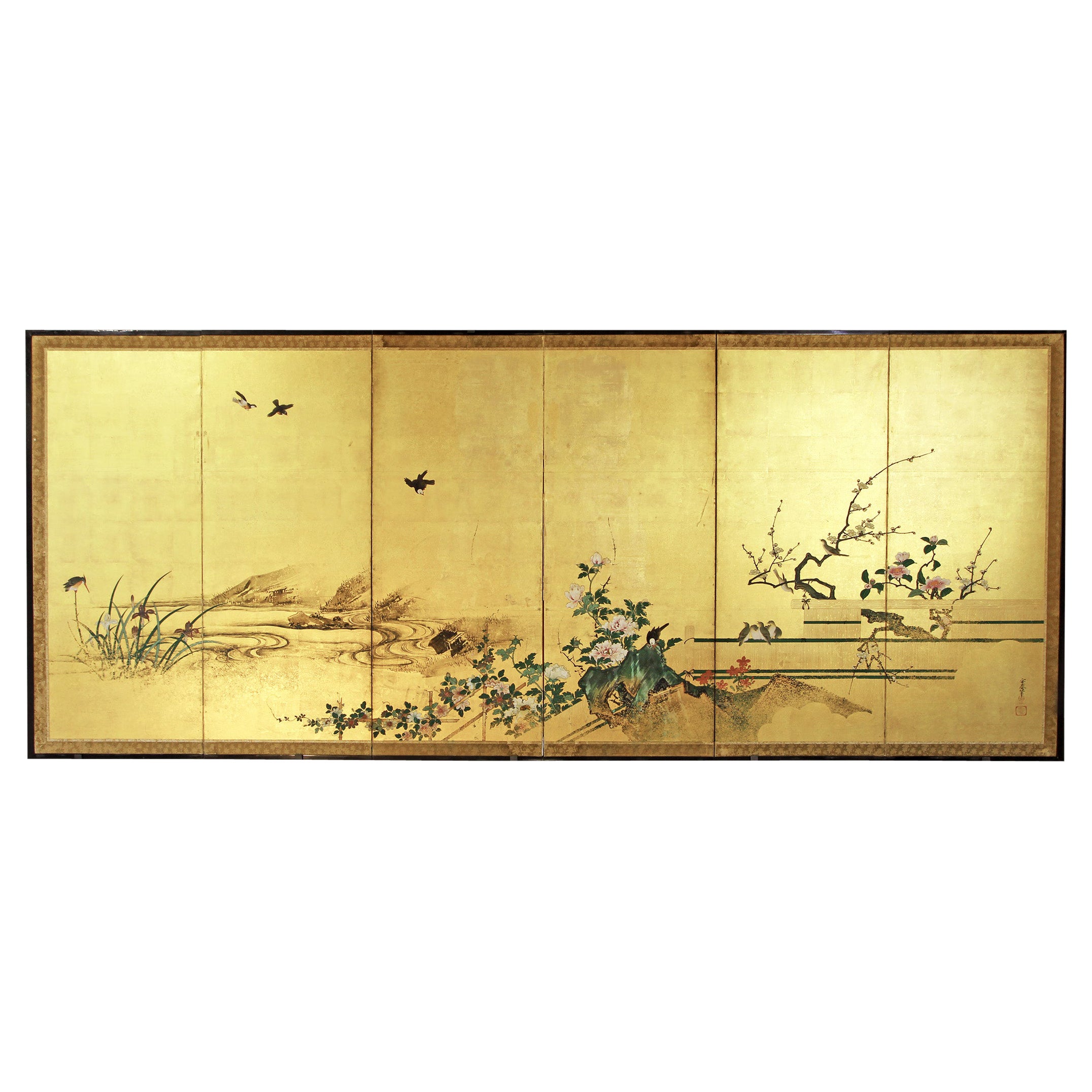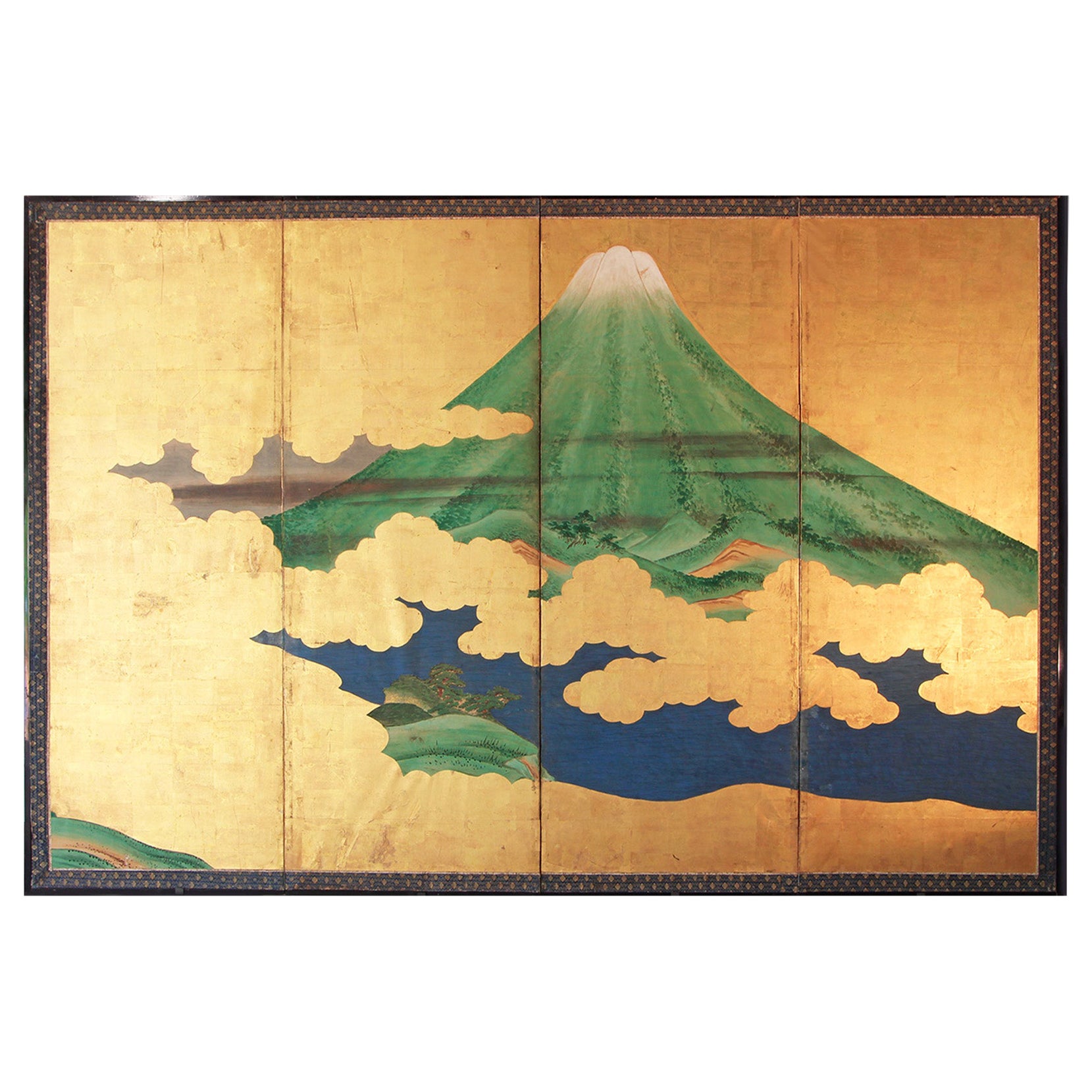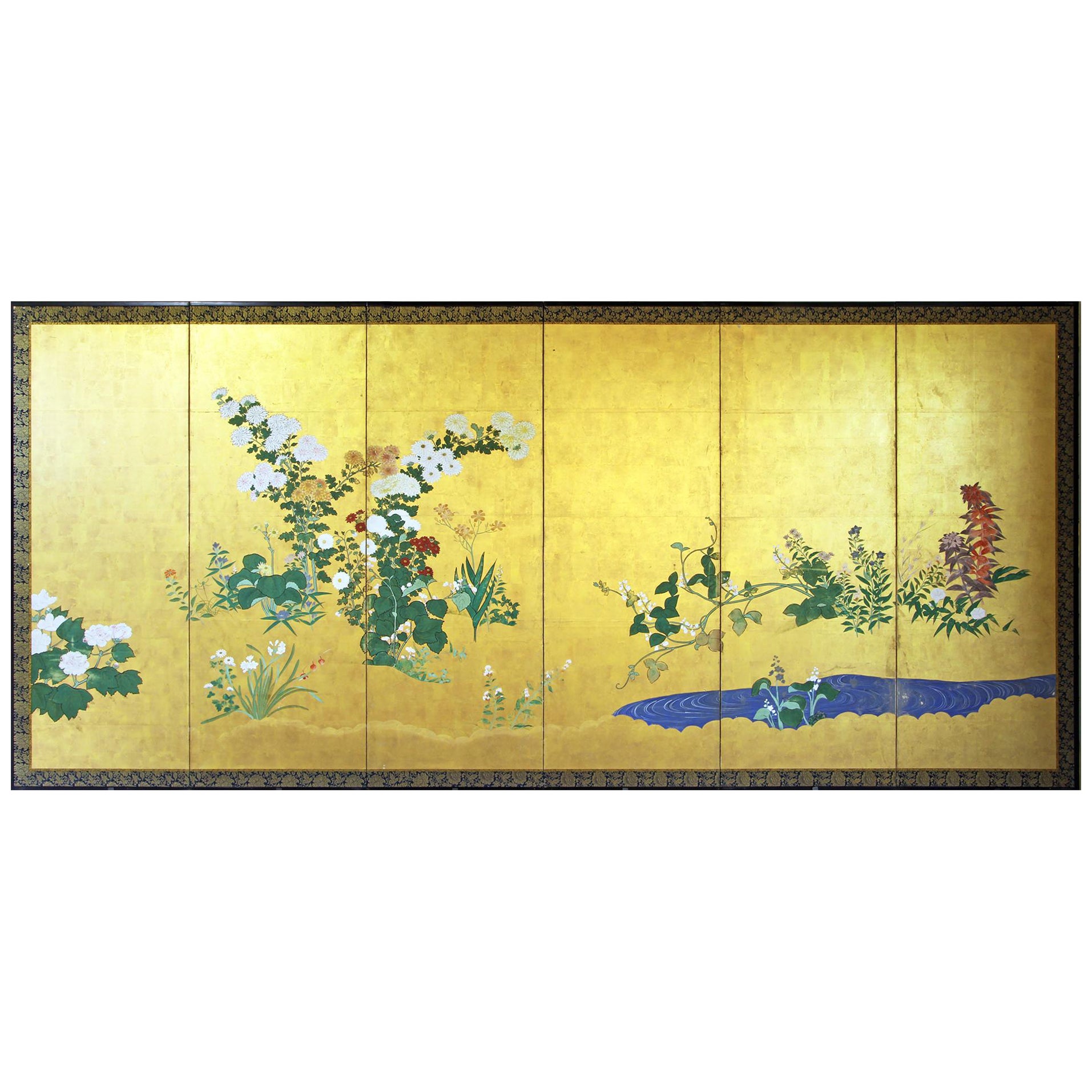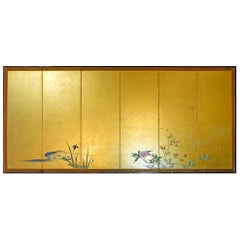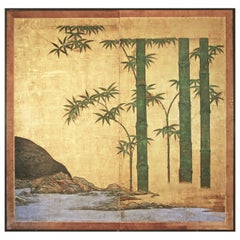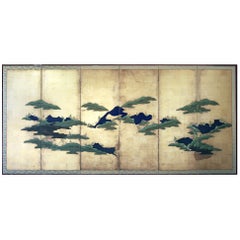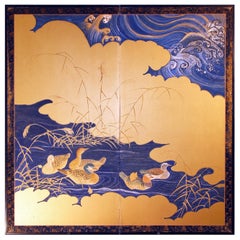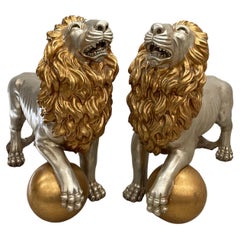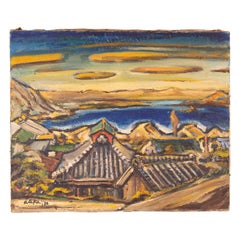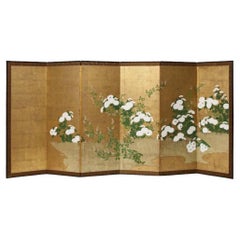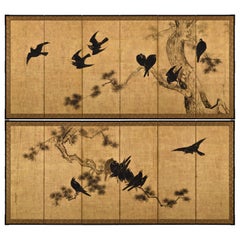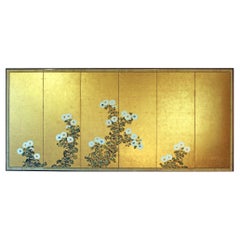
Paravento Giapponese - Foglia d'oro
View Similar Items
Want more images or videos?
Request additional images or videos from the seller
1 of 7
Paravento Giapponese - Foglia d'oro
$22,477.57List Price
About the Item
- Creator:Japanese Studio (Artist)
- Dimensions:Height: 67.33 in (171 cm)Width: 148.04 in (376 cm)Depth: 0.79 in (2 cm)
- Style:Edo (Of the Period)
- Materials and Techniques:
- Place of Origin:
- Period:
- Date of Manufacture:1860 circa
- Condition:
- Seller Location:Brescia, IT
- Reference Number:1stDibs: LU5628237772232
About the Seller
5.0
Recognized Seller
These prestigious sellers are industry leaders and represent the highest echelon for item quality and design.
Gold Seller
Premium sellers maintaining a 4.3+ rating and 24-hour response times
Established in 1981
1stDibs seller since 2021
20 sales on 1stDibs
Authenticity Guarantee
In the unlikely event there’s an issue with an item’s authenticity, contact us within 1 year for a full refund. DetailsMoney-Back Guarantee
If your item is not as described, is damaged in transit, or does not arrive, contact us within 7 days for a full refund. Details24-Hour Cancellation
You have a 24-hour grace period in which to reconsider your purchase, with no questions asked.Vetted Professional Sellers
Our world-class sellers must adhere to strict standards for service and quality, maintaining the integrity of our listings.Price-Match Guarantee
If you find that a seller listed the same item for a lower price elsewhere, we’ll match it.Trusted Global Delivery
Our best-in-class carrier network provides specialized shipping options worldwide, including custom delivery.More From This Seller
View AllParavento Giapponese a sei pannelli su foglia d'oro.
By Japanese Studio
Located in Brescia, IT
Paravento giapponese a sei pannelli , opera di un pittore della prima metà del 19° secolo, di scuola Rinpa.
Sei pannelli dipinti con inchiostro su foglia oro e "gofun" su carta veget...
Category
Antique Early 19th Century Japanese Edo Paintings and Screens
Materials
Gold Leaf
Paravento Due Pannelli Bambù su Foglia d'Oro
By Japanese Studio
Located in Brescia, IT
Paesaggio giapponese della sciuola di Kano dei primi anni del XVIII° secolo a due pannelli con alberi di bambù. Pigmenti minerali e foglia d'oro su carta vegetale. Bordo in seta ne b...
Category
Antique Early 18th Century Japanese Edo Paintings and Screens
Materials
Gold Leaf
Paravento giapponese a sei pannelli dipinto su foglia d'argento
By Japanese Studio
Located in Brescia, IT
Paesaggio giapponese: paravento a sei pannelli dipinto a pigmenti minerali su foglia d'argento.
Elegante e moderno esempio di arte orientale senza figure uccelli o fiori.
Paravento b...
Category
Mid-20th Century Japanese Showa Paintings and Screens
Materials
Silver Leaf
Paravento Giapponese a due pannelli
By Japanese Studio
Located in Brescia, IT
Sempre alla ricerca di cose particolari abbiamo acquistato questo paravento giapponese da una collezionista di Osaka.
Un esempio di arte del novec...
Category
20th Century Japanese Showa Paintings and Screens
Materials
Gold
Japanese Folding Screen Landscape paint on Gold Leaf Six Panels
By Japanese Studio
Located in Brescia, IT
Folding screen depicting a landscape by a painter of the Rinpa school, early 19th century.
Six panels painted in ink on gold leaf and "gofun" on vegetable paper.
Rinpa is one of the ...
Category
Antique Early 19th Century Japanese Edo Paintings and Screens
Materials
Gold Leaf
Japanese Folding Screen Gold Leaf
By Japanese Studio
Located in Brescia, IT
Byobu painted with mineral pigments on gold leaf, the quality of the painting is still excellent, with no color loss or restorations.
A classic four-panel screen depicting Mount Fuji...
Category
Antique Early 19th Century Japanese Edo Paintings and Screens
Materials
Gold Leaf
You May Also Like
Coppia sculture leone in legno foglia oro e foglia argento
By Mice di rugiano domenico e c. s.n.c.
Located in Cantù, IT
Coppia sculture leone in legno foglia oro e foglia argento
Category
Vintage 1970s Other Sculptures and Carvings
Materials
Wood
Japanese Modernist Painting of a Seaside Village by Torao Ataka Dated 1930
By Japanese Studio
Located in San Francisco, CA
A Modern oil painting of a harbor town with the water and mountains views in the distance.
It is signed on the bottom left hand corner Ataka and dated '30 (1930).
The brushwork is ...
Category
Vintage 1930s Japanese Modern Paintings and Screens
Materials
Canvas, Paint
Kiku to Hagi Byobu, Rinpa School Style, Edo Period.
Located in Point Richmond, CA
A Chrysanthemum and Bush Clover painting on gold leaf six-panel folding screen, painted with clusters of leafy green chrysanthemum plants with white blossoms having moriage relief petals of gofun growing amidst pink blossoming bush clover within a bunched bush clover garden fence rendered in lighter gold relief, all on a background entirely of rich gold leaf. These two flowers are symbolic of Japan and the autumn season. The classic patterned paper verso with a Naga Antiques...
Category
Antique Early 1800s Japanese Edo Paintings and Screens
Materials
Gold Leaf
Mid 18th Century Japanese Screen Pair. Crows & Pines by Unkoku Toshuku.
Located in Kyoto, JP
Unkoku Toshuku (1722-1779)
Crows and Pines
A pair of six-panel Japanese Screens. Ink and gold leaf on paper.
Dimensions: Each Screen: H. 170.5 cm x W. 375 cm
Haha-cho or mynah birds, whose forms resemble crows in artwork, were commonly depicted in Japanese art. These types of paintings were originally modeled on paintings attributed to the 13th century Chinese painter Muqi (Mokkei), whose art was enormously influential in Japan. Crows only became a theme among Japanese artists from the later 1500s onward. They likely were inspired by these imported Chinese paintings of myna birds, which are not native to Japan, substituting the native species of crow instead.
The best known early examples of the depiction of Japanese crows are two Momoyama screen...
Category
Antique Mid-18th Century Japanese Edo Paintings and Screens
Materials
Gold Leaf
Japanese Screen Painting, Circa 1700 'Tales of Ise' by Tosa Mitsusuke
By Tosa Mitsusuke 1
Located in Kyoto, JP
A six-fold Japanese screen by Tosa Mitsusuke (1675-1710), Japan 17th-18th century, Edo period.
The signature reads Shoroku-i ge Tosa sa Konoe Shogen Mit...
Category
Antique Late 17th Century Japanese Edo Paintings and Screens
Materials
Gold Leaf
Late 17th Century Japanese Screen Pair. Battle of Ichi-no-tani and Yashima.
Located in Kyoto, JP
Anonymous
Late 17th Century
Battle of Ichi-no-tani & Yashima
Dimensions: Each Screen: H. 175 cm x W. 385 cm (69” x 151.5”)
This pair of Japanese screens depict two significant battles from the Genpei War (1180–85), as recounted in the Tale of the Heike, a semi-historical epic chronicling the conflict between rival clans for control of Japan, written in the early 1200s.
Each screen portrays a single battle through a series of small episodes, framed by gold clouds, landscape elements, and architectural features. True to the style of many screens inspired by The Tale of the Heike, the scenes are rendered in lavish colors and gold, downplaying the brutality of the warfare. Although based on real events, these narratives often glorified and romanticized the heroic feats of the warriors. Viewers at the time would have been familiar with the story’s details, leading to a proliferation of paintings on folding screens inspired by this theme from the late Muromachi to the early Edo periods.
On the right screen, we see the Minamoto’s attack on the Taira, who have retreated from the capital, Kyoto, toward the sea. The central building represents the temporary Taira headquarters, where Taira soldiers are holding the young Emperor Antoku. The Minamoto plan to launch a surprise attack from the rear after descending the steep cliff known as Ichi-no-tani, depicted at the top center. This scene highlights the tactical brilliance of Minamoto commander Yoshitsune and the courage of his men.
The left screen captures moments from the Battle of Yashima...
Category
Antique Late 17th Century Japanese Edo Paintings and Screens
Materials
Gold Leaf
Recently Viewed
View AllMore Ways To Browse
Japanese Screen Rinpa
Ogata Korin
Ogata Kenzan
20th Japan Painting On Silk
Japanese Scroll Box
Asian Art Scrolls
Japanese Silk Painting Ink
Antique Lacquer Painting
18th Century Screen
Scroll Painting Silk
Silk Japanese Scrolls
Framed Art With Asian Brass Frame
Asian Panel Lacquer
Mineral Pigments On Silk
Silk Bird
Japanese Showa Screen
Antique Gold Leaf Screens
Japanese Lacquer Panel Screen
